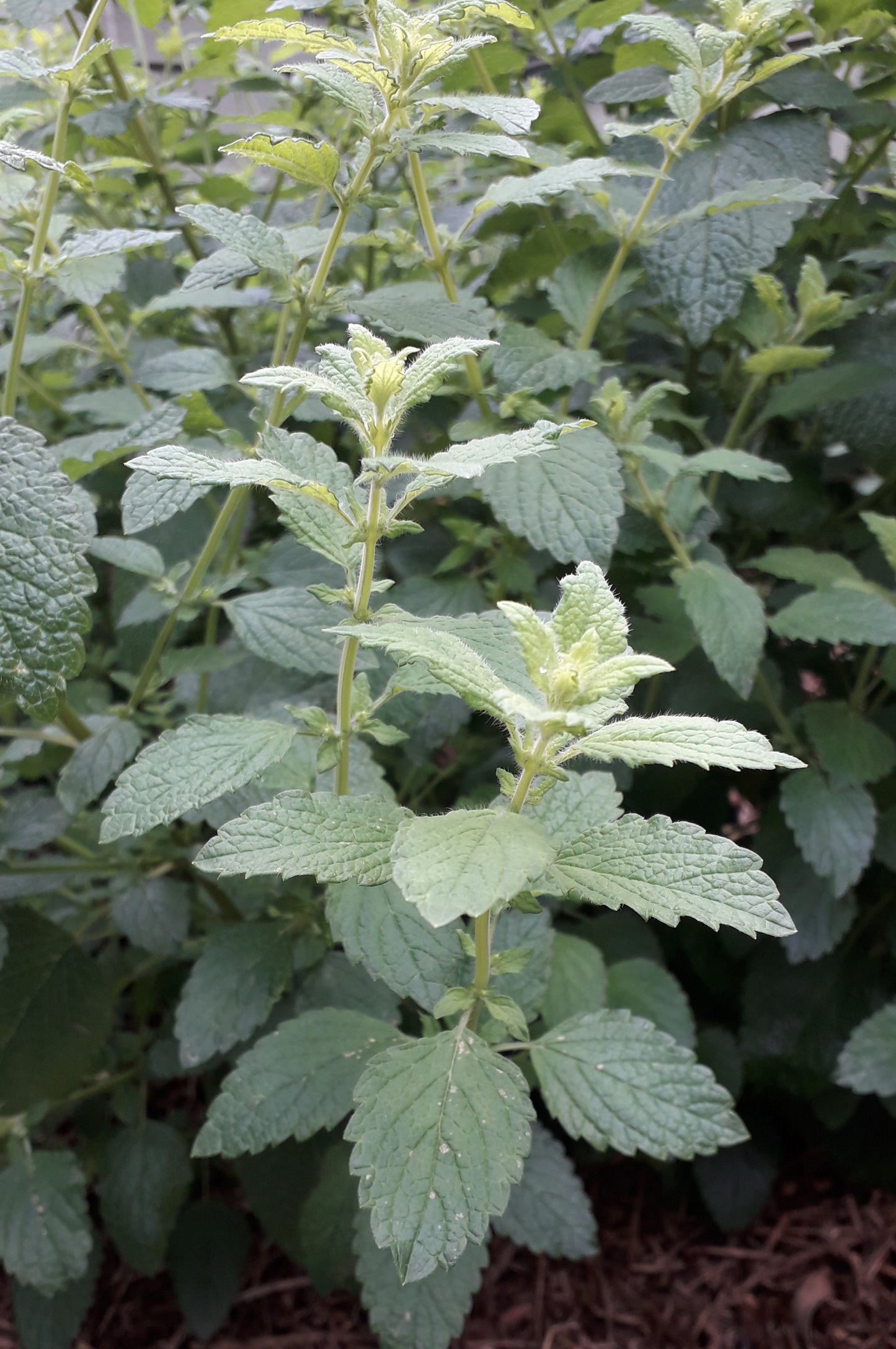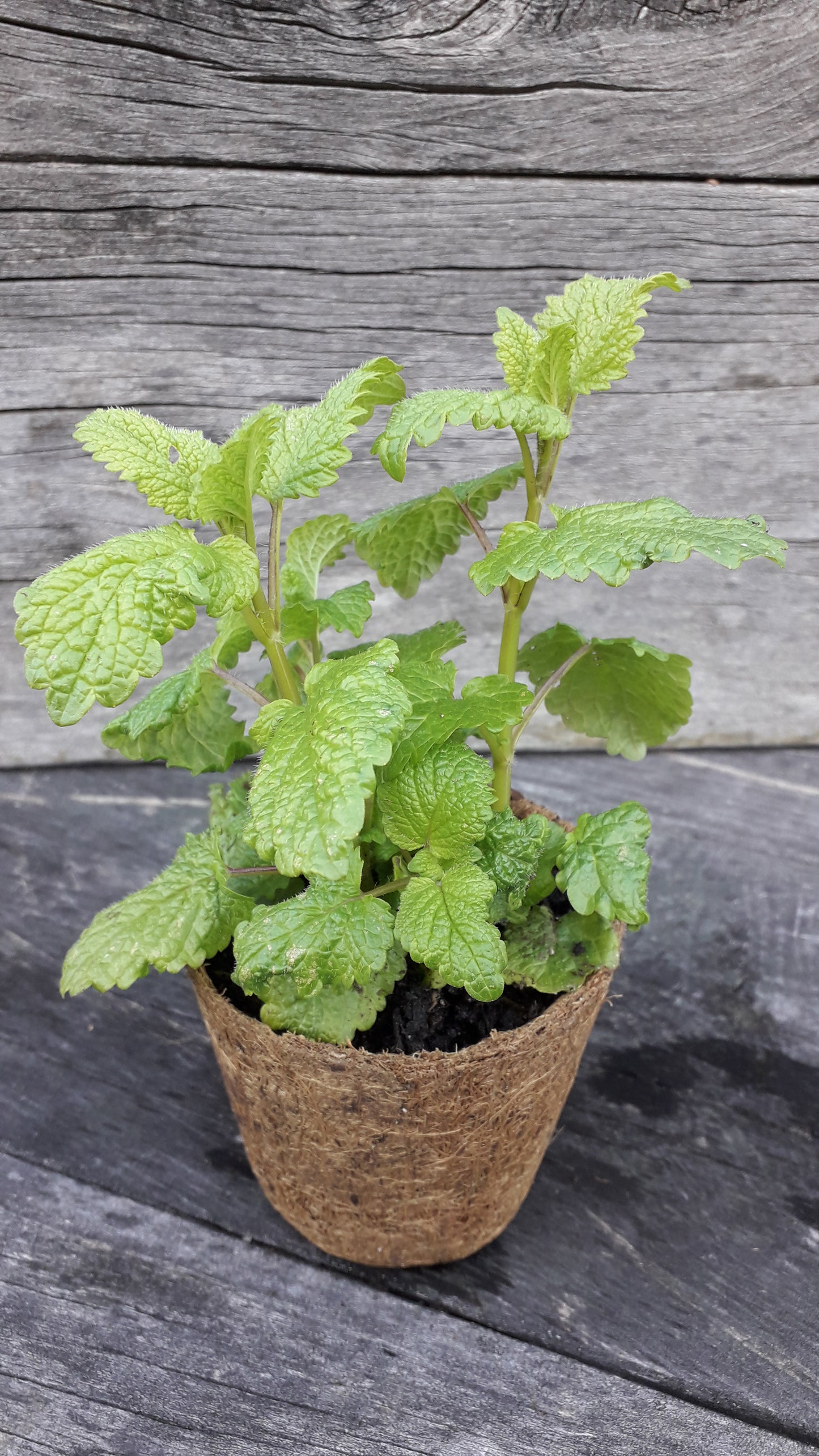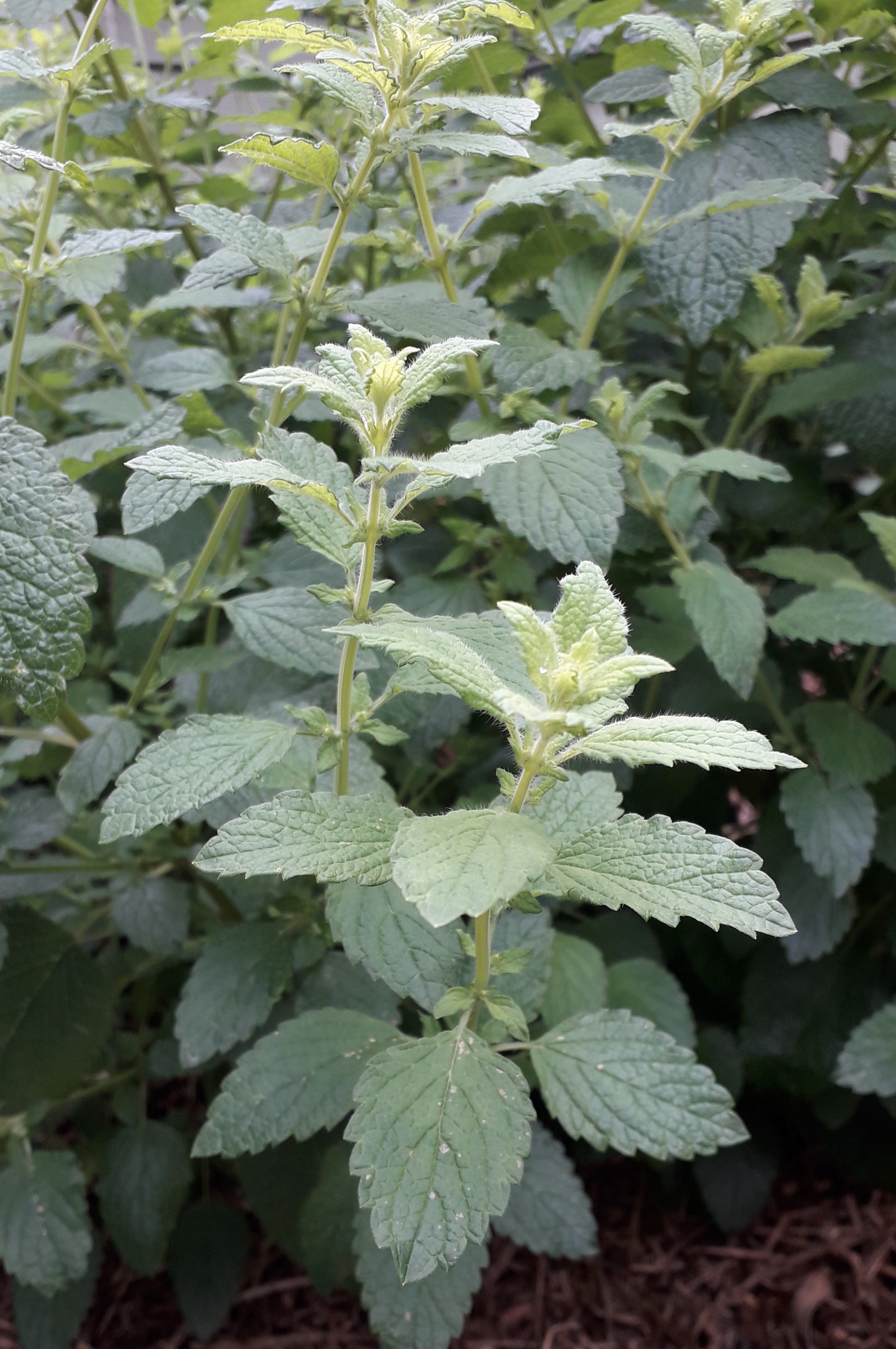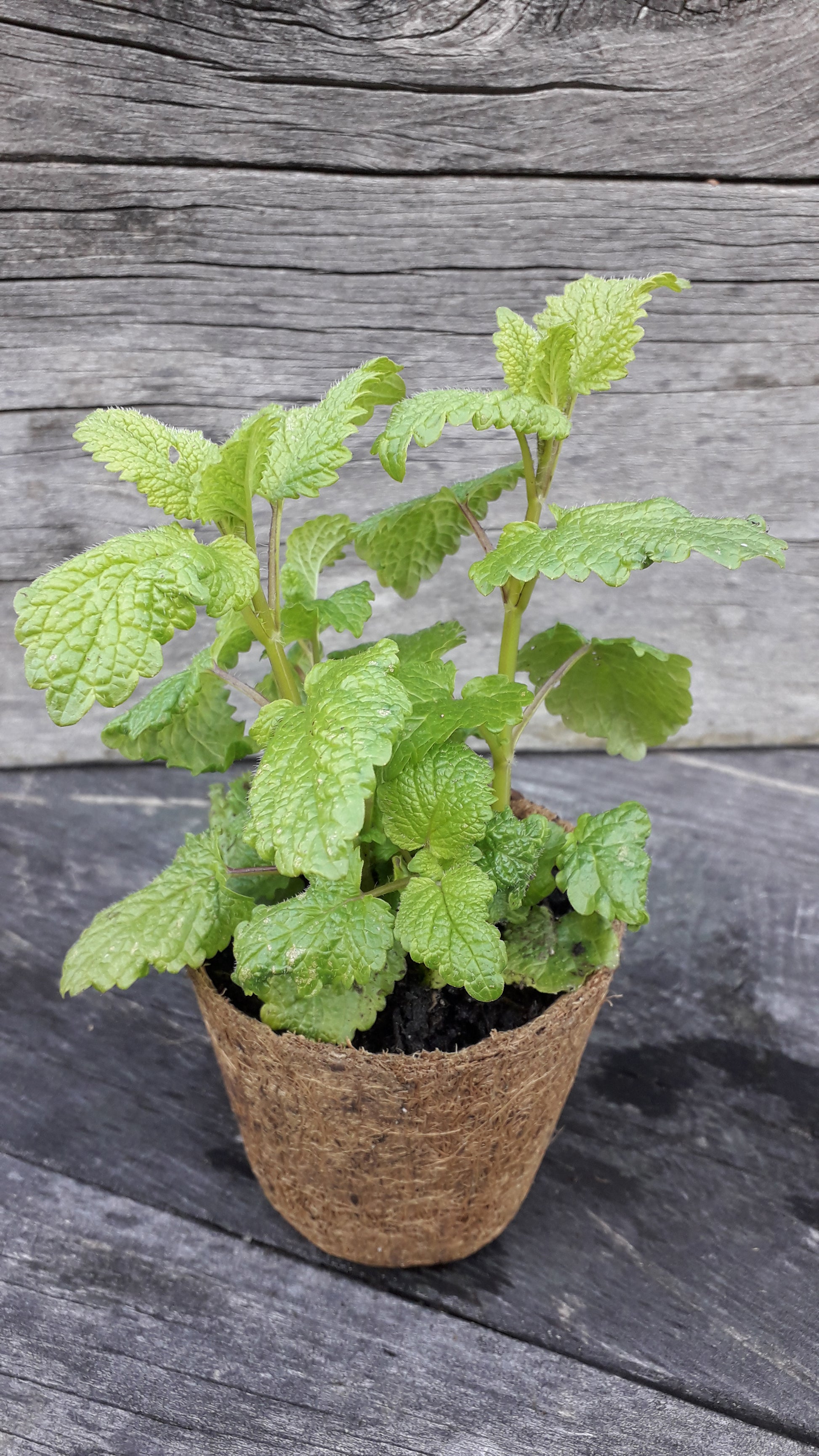The Herb Garden
Lemon Balm
Lemon Balm
Couldn't load pickup availability
Lemon Balm
Botanical name: Melissa officinalis
Life cycle: Perennial
Height: 60-100 cm
Position: Full sun / Part shade
Soil preference: Moist / well drained
Description
Lemon balm is a clump forming perennial growing to around 1 metre high. It has a square branching stem and broadly oval, toothed, and deeply veined leaves that are covered in stiff hairs. The leaves have a fragrant lemon smell and taste. The small white flowers bloom throughout the summer months. Although a member of the mint family, lemon balm doesn’t spread from runners. However, it can self-sow aggressively. These offspring are easily removed if in the wrong place.
Uses
Lemon balm is highly aromatic and has a delicate lemon flavour. It has a wide variety of uses and is commonly used in drinks, particularly as a tisane, in iced tea, fruit punches and cordials. Use a generous amount for tisanes, as lemon balm loses flavour in hot water. Lemon balm also adds zing to fruit salads, garden salads, sorbet, herb butters, and dressings .Tiny sprigs can also be used to garnish fruit drinks.
Traditionally, lemon balm was taken to lift the spirits. Lemon balm makes a delicious tea which can be used as a relaxing tonic to relieve anxiety, mild depression, release tension, enhance relaxation and promote restful sleep.
Underneath its wonderful lemony taste, lemon balm also has slightly bitter attributes and is antispasmodic, making it an excellent carminative and treatment for gastric upset such as nausea, bloating and colic.
Lemon balm also has antiviral properties and as such can be used to treat cold sores. Studies have shown that lemon balm will reduce healing time and reduces the chances of further outbreaks.
Bruised fresh leaves can be applied to insect bites, cuts, and grazes to help lessen pain and swelling.
Growing conditions
Lemon balm can be grown from seeds sown in spring or autumn or by dividing clumps of roots in early spring. It is shallow rooted, so needs plenty of water during hot weather and prefers a well-drained soil and semi-shaded position. Cut back after flowering to encourage new growth, and mulch in areas where frosts are severe.
Bees are attracted to the flowers.
9cm pot.
Organically grown plant in a biodegradable coir pot.
Share




